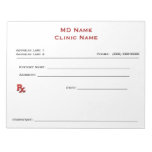The word client implies someone with a need that can be satisfied through an agreed upon payment to the provider of the service. To some extent, there is a balance of power. Clients have the ability to choose where to spend their money and can often use that as leverage to gain a desired level of service. Service providers want to attract customers who are likely to spend money. Significant time and money go into advertising and gimmicks that will bring in the right customer. Individuals who cannot or will not spend money are quickly pushed to the side to make way for paying customers. Service providers have a priority on profits. The goal of customer service lies in keeping customers happy so they will spend more money.
Medical care has been pushed more and more into a business model looking to reap profits. The rising costs of healthcare in this country attest to our nation’s inability to curb medical costs. In a business model, when costs go up, the price of services is passed on to the consumer. When the price of a car goes up, customers can buy a cheaper make or model, but healthcare is rarely as flexible. Customers have the ability to take their business elsewhere, but patients often do not. They are limited by insurance coverage or lack thereof. Barriers to care prevent mobility, as does access to reliable and convenient transportation. A client can usually live without a car, but lack of healthcare can—and does—kill patients.
A push for improved bedside manner and frustration at the system has lumped customer satisfaction into patient care. The original intent may have been better communication and patient well-being. But in many instances, low patient satisfaction is a result of not receiving the requested antibiotics, imaging, or other warranted diagnostic testing as opposed to poor medical care. The actual root causes of poor patient outcomes rarely show up on a patient satisfaction survey.
Within the very nature of a physician patient relationship there is an undeniable level of inequality. Referring to patients as clients does not remove that imbalance of power. Rather, it only serves to gloss over it. Patients are ill or injured, sometimes gravely. Patients are exposed. Patients are often alone. Patients are vulnerable. Service providers have a commitment to profits first and customers second. Physicians, however, have a responsibility to their patients.
I have a professional dedication to my patients: to care for them, to listen to them, and to give them the best of my medical experience. A physician-patient relationship implies shared decision making using my medical knowledge paired with my patients’ values and needs. When patients become clients, they seem less vulnerable than they are and less in need of compassion or care. Medicine must return to patient care and not merely customer service.




No comments:
Post a Comment